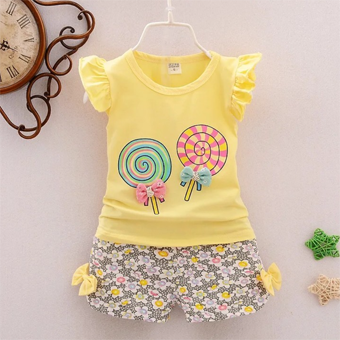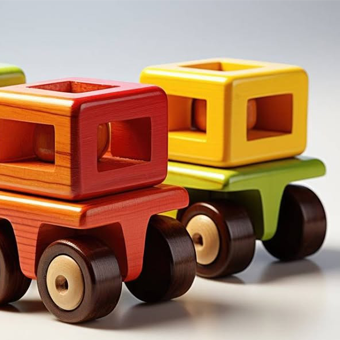12 benefits of outdoor play (and tips for helping kids reap these benefits)
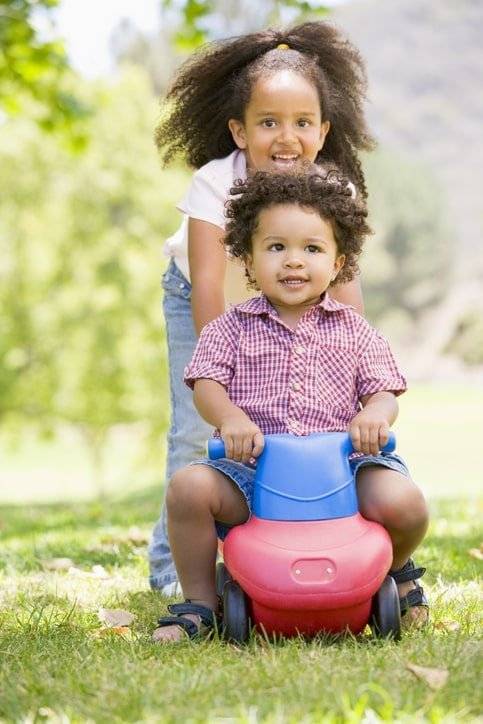
What are the benefits of outdoor play for a child’s development? Research tells us there is no one-size-fits-all answer. It depends on what kids actually do when they’re outside. It also depends on where kids play. But overall, children can reap many benefits when they play outdoors, including
- a reduced risk of myopia, or nearsightedness;
- greater exposure to bright light, which enhances health and mental performance;
- increased activity levels, and greater freedom to run, jump, and climb;
- opportunities for hands-on learning about physical forces and concepts;
- reduced stress levels, better moods, and improved concentration;
- more naturally-attuned sleep rhythms; and
- enhanced opportunities to learn social skills, overcome fears, and develop a lifelong connection with nature.
In addition, it’s possible that outdoor play could help reduce the incidence of behavior problems. It may help fight obesity, too. Here is a more detailed look at the benefits of playing outside — and the conditions that make time spent outdoors especially rewarding.
12 benefits of outdoor play
Benefit #1: Outdoor play can reduce a child’s risk becoming nearsighted.
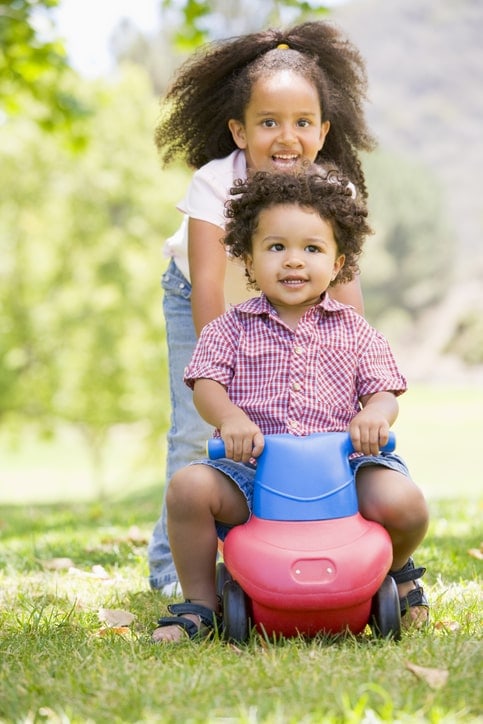
Heredity plays a big role in whether or not a child develops myopia, or nearsightedness. But it’s also clear that time spent outdoors is protective. Scores of studies show links between outdoor time and the development of myopia. Kids who spend more time outside are less likely to become nearsighted (Goldschmidt and Jacobsen 2014, Rose et al 2016).
And experiments confirm that we can prevent or delay nearsightedness by “prescribing” more outdoor play. For example, in one randomized study, 6-year-olds assigned to get an extra 40 minutes of outdoor time each day were less likely to develop myopia over the following three years (He et al 2015).
Why does it help to go outside? Researchers aren’t yet sure. One possibility is that it provides the eyes with a break from “close work,” like reading. Lots of close work increases a child’s chances of becoming nearsighted. Another possibility is the eyes benefit from exposure to bright daylight. But either way, it looks like outdoor play is a good prescription for reducing the risk of myopia.
Benefit #2: Outdoor play helps ensure that kids get enough sunlight — and that’s good for their bodies and brains.
Sunlight — even the light we encounter outside on a heavily overcast day — far exceeds the lighting we typically encounter indoors. So going outside makes a big difference in the amount of light exposure we encounter.
That’s important, because lots of things go wrong when children don’t get enough sunlight. The brain tunes its “inner clock” using light cues, so going outdoors can help children maintain healthy sleep rhythms (see benefit #9 below).
In addition, exposure to sunlight helps ensure that kids get enough vitamin D, affecting numerous health issues, including bone growth, muscle function, and even the timing of puberty. And here’s another reason to care about your child’s exposure to sunlight: Bright light helps kids concentrate, and may actually enhance the formation of synapses in the brain.
In fact, recent research has persuaded me that we shouldn’t be complacent about lighting. Until proven otherwise, we should assume that long hours in dim lighting conditions could impair a child’s potential to learn. Read more about this fascinating research in my article about the effects of sunlight on children.
Benefit #3: Kids get more vigorous exercise when they’re outdoors. (But the effect varies. Some kids need encouragement to get moving!)
It seems like common sense, and it’s been verified: Kids tend to get more exercise when they play outside. But the size of the effect varies. For example, consider a study of 46 preschoolers in daycare. Researchers fitted each child with an accelerometer and a GPS device, and then tracked the chidren’s movements over the course of the day. When researchers analyzed the results, they found that outdoor play had a major impact on physical activity levels.
Kids were twice as active when they were playing outside, and every additional 10 minutes spent outdoors resulted in almost 3 extra minutes of moderate-to-vigorous physical activity (Tandon et al 2018).
Another, larger study reported a similary substantial effect among 5- and 6-year-olds: For every additional hour of outdoor play, kids spent about 10 minutes more time in moderate-to-vigorous physical activity (Larouche et al 2017).
But outdoor time doesn’t always have a big impact. In a study of more than 6200 school kids (ages 9-11), each additional hour of outdoor time added only 1.5 to 3.0 minutes of moderate-to-vigorous physical activity to a child’s day (Larouche et al 2018).
The takeaway? Outdoor play can boost activity levels, which is obviously a good thing. Kids need cardiovascular exercise for good health. There’s also evidence that exercise benefits a child’s cognitive performance. But when we count exercise as one of the benefits of outdoor play, we should keep in mind the limitations. Some kids need additional encouragement to be physically active. Merely going outdoors isn’t enough!
What can we do? One promising approach is to help kids find peers to play with outdoors. Research suggests that kids get more exercise outside when they are with friends or siblings (Pearce et al 2014). Another approach is to increase children’s access to safe, outdoor play spaces. Researchers report that urban kids have become more active when their neighborhoods closed off portions of streets for outdoor play (d’Haese et al 2015). And structure can help. In one study, adolescents obtained the most exercise during structured, outdoor activities, such as team sports (Pearse et al 2018).
Benefit #4: Outdoor play provides kids with greater freedom to develop their athletic abilities – to run fast, jump far, and climb.
Outdoor play doesn’t guarantee that a child will become more physically coordinated. For example, in a study of preschoolers, researchers found that kids’ basic motor skills (like throwing, somersaulting, and kicking a ball) didn’t vary much as a function of how often a child played outdoors (Gray et al 2015).
But when children play outside, they usually have more freedom to move around. They can do things that aren’t typically possible indoors – run at top speed, climb tall structures, swing from their arms.
So it makes sense to think that playing outside could help kids develop specific athletic abilities and skills, and there were hints of this in the preschooler study. The kids who played outside more often were faster on their feet. Compared with their more “indoor” peers, they completed a ten meter race in a shorter time.
Benefit #5: Outdoor play offers young children special opportunities learn new words and concepts.
Studies suggest hands-on exploration helps young children learn new words — especially words for things that kids can experience physically — like movements, textures, touchable objects, and physical processes (de Nooijer et al 2013; Inkster et al 2016; Suggate and Stoeger 2016).
It’s much easier to learn what squish means if you get to feel mud squishing through your fingers. You’re more likely to understand the concept of melting if you conduct your own experiments with ice cubes in the sun! So going outdoors is an opportunity for kids to widen their sensory experiences, and gain an intuitive, “embodied” understanding of how things work.
Looking for ideas to spark exploratory outdoor play? See these outdoor learning activities, including
Benefit #6: When kids play in green spaces, they reap special psychological benefits, including better recovery from stress, and enhanced concentration.
Not all time spent outdoors is equal. Nature experiences have a special, restorative effect. For instance, experimental studies suggest that nature walks trigger short-term improvements in mood and stress recovery. And there is evidence showing that kids become more attentive and focused after playing in natural settings.
In one study, researchers tested children’s attention and working memory performance, and then sent them outside to play in one of two places – (1) a green space with trees, or (2) a paved school yard.

After the kids returned, they were tested again, and the results depended on where they had played: Playing in the green space resulted in improvements in attention and working memory performance. Playing on the school yard had no measurable effect (Amicone et al 2018). Read more about the restorative benefits of nature here.
Benefit #7: Connecting with nature may also lower a child’s risk of behavior problems.
As I’ll explain in another Parenting Science article, there’s good evidence that people who feel a strong connection with nature are happier and better-adjusted.
For example, in a recent study of preschoolers, researchers found that nature-connected kids were better-behaved. They were less likely to suffer from emotional difficulties, and more likely to show kindness toward others (Sobko et al 2018). In addition, observational studies suggest that lifelong exposure to green space may reduce a child’s risk of developing certain behavior problems, like hyperactivity and attention deficits (Vanaken and Danckaerts 2018).
So instead of just sending kids outside, we should also nurture their interest in the natural world. This includes teaching kids about local wildlife, and enlisting them to help preserve wildlife habits. Read my tips for helping kids feel connected with nature.
Benefit #8: Cooperative outdoor play can help children learn social skills
In a study of 575 Australian children between the ages of 2 and 5, researchers found a substantial link between outdoor play and social savvy. The kids who spent the most time outdoors were, on average, more cooperative. They were also more socially expressive – better able to to verbalize their desires, and enter into play with others. By contrast, time spent playing video games was unrelated to social skills (Hinkley et al 2018).
This doesn’t prove the outdoor play caused children to become more cooperative and socially expressive. Maybe the sort of parents who insist on outdoor play are also more likely to teach their kids the social niceties! But given what we know about the benefits of outdoor play in green spaces, it’s easy to see how nature experiences could indirectly contribute to the development of social skills.
Kids who spend lots of time playing in green spaces might feel less stressed, more focused, and more cheerful. And that would make it easier for them to maintain friendly relationships and hone their communication skills. It’s also clear that young children can learn valuable social lessons when they play with others, especially if they play with older individuals who model desirable behavior, like turn-taking and compromise. So if kids play outside with other children, they’ll have more opportunities to learn social skills.
My hunch? Sending children outside won’t, by itself, transform them into better citizens. But nature experiences — and cooperative, outdoor play — are probably quite helpful. For more information about fostering social skills, see these tips about preschoolers, as well as these social skills games and activities for kids of all ages.
Benefit #9: Positive nature experiences teach children to respect — and protect — the environment.
People who report positive experiences with nature are more likely to behave in ways that protect the environment, and we can see the effect in children as well as adults: Kids who spend more time in nature express more appreciation for wildlife, and more support for conservation (Soga et al 2016; Zhang et al 2014; DeVille et al 2021).
Moreover, childhood experiences predict adult behavior. In a study tracking children from the age of 6, researchers found that childhood time spent outdoors was positively linked with environmentally responsible behavior during young adulthood (Evans et al 2018).
Benefit #10: Wrestling with sleep troubles? Outdoor play doesn’t make kids sleep longer at night. But it may help children fall asleep more easily.
You might have heard that outdoor play increases the time that kids spend sleeping at night. Is it really true? Studies suggest otherwise. For example, two studies of young children found no relationship between the amount of outdoor playtime and total duration of nighttime sleep (Parsons et al 2018; Xu et al 2015).
Likewise, a study of older children failed to find any correlation between time spent outside and sleep duration. Yes, kids spent slightly more time in bed. For every additional hour spent outside each day, children stayed an additional 4 minutes in bed. But these kids weren’t logging more time asleep. They were just lying down longer (Lin et al 2018).
So we shouldn’t expect our kids to snooze longer merely because they spend more time outdoors. But outdoor play can affect another important aspect of sleep: how long it takes for kids to start feeling drowsy at night. Outdoor play may help children fall asleep earlier in the evening.
The reason? As we’ve noted, outdoor play exposes children to sunlight, and sunlight is a powerful cue for programming the brain’s “inner clock.” When we get more sunlight, our brains become better synchronized with the natural rhythms of day and night. And when night rolls around, the brain shifts gears more readily. It begins producing the “drowsy making” hormone, melatonin, earlier in the evening (Gabel et al 2013; van Maanen et al 2017).
So if you’ve got a kid who stays up too late at night, one remedy is to increase sunlight exposure during the day. But be aware: You’ll also need to minimize your child’s exposure to artificial lighting at night. Such nighttime exposure — including exposure to light-emitting electronic screens — can suppress or delay the release of melatonin. And as I explain in another article, kids are especially sensitive to its effects. Your best bet? Encourage outdoor play, and also practice good sleep hygiene: Limit your child’s exposure to artificial lighting at night, especially in the hour leading up to bedtime (Akacem et al 2018).
Benefit #11: Outdoor play may encourage kids to take calculated risks – and become more confident in their abilities.
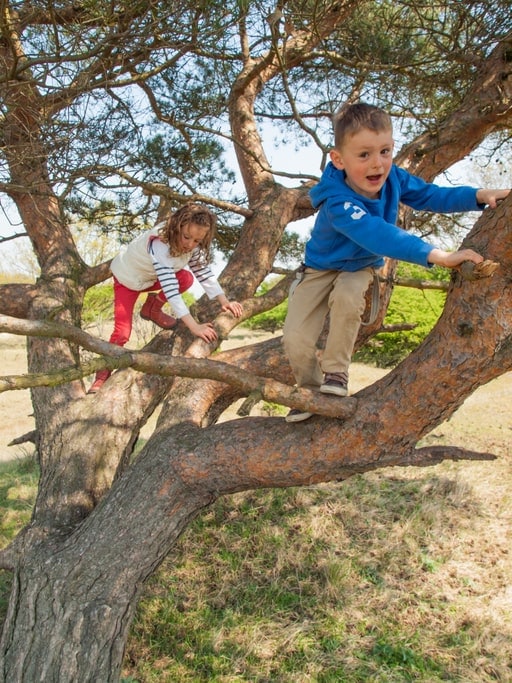
This is one of those intriguing ideas that makes sense, but is awaiting rigorous, scientific testing. The notion is that kids today are rarely permitted to engage in activities that could put them at risk of injury, and that’s bad: If you never test your physical abilities – by, say, climbing a tree – how will learn?
In Norway, many preschoolers attend outdoor, nature schools, where adults permit kids to climb and leap and take chances. When children master these challenges, they feel exhilarated, and some researchers think the experiences could function as a kind of anti-phobia behavioral therapy. Children learn that they can cope with frightening situations (Sandseter and Kennair 2011).
This doesn’t mean that adults should abandon all efforts to enforce safety rules. But researchers suggest we shift our mindset from making children’s lives “as safe as possible” to “as safe as necessary.” They say we should offer kids with outdoor venues that feature structures to climb, graded to their developmental abilities. Offer kids construction materials, and access to dirt, sand, and water. Give children opportunities to help out in the garden, and care for animals (Brussoni et al 2012). And studies indicate that kids relish these opportunities. For example, kids prefer playgrounds with more challenging climbing structures (Brussoni et al 2011).
Benefit #12: By itself, outdoor time probably doesn’t prevent obesity — but it’s a good first step toward a more active, healthful lifestyle!
Recently, researchers tracked changes in BMI (body mass index) for more than 2800 children (3- and 4-year-olds) attending 125 different Head Start centers across the United States. In some centers, teachers gave children more time to play outdoors. Did it make a difference to the children’s BMIs? Yes.
For example, researchers considered children who were already obese at the beginning of the study. How did the kids experiencing the highest levels of outdoor time each day (60 minutes or more) fare against those who’d experienced the lowest levels of outdoor time (20 minutes or less)? The kids who spent more time outdoors lost the most weight, with the difference between groups averaging about 0.34 BMI points.
And when researchers reviewed the trajectories of all children, including those who began the study with normal BMIs, they again found a clear link between obesity risk and time spent playing outside: For every additional minute of outdoor play, a child was 1% less likely to become obese.
That’s nothing to sneeze about. But before we start thinking of outdoor play as a cure-all for obesity, keep in mind: Studies of older kids fail to support the idea. Why? It isn’t that outdoor time and obesity aren’t connected. But the link tends to disappear when researchers control for other factors, like diet, screen time, inadequate sleep, and physical inactivity levels (Ren et al 2017; Larouche et al 2016; Grigsby-Toussaint 2011).
As we’ve seen above (Benefit #3), kids can spend time outdoors without increasing their physical activity levels. So we should think of outdoor play as an excellent first step — a opportunity to motivate kids to exercise.
More information about the benefits of play
In this article we’ve focused on the particular benefits of playing outside. But of course play is good for kids wherever they are — indoors or out. To learn more, see my evidence-based article, “The cognitive benefits of play: Effects on the learning brain.”
References: The benefits of outdoor play
Aggio D, Gardner B, Roberts J, Johnstone J, Stubbs B, Williams G, López Sánchez GF, Smith L. 2017. Correlates of children’s independent outdoor play: Cross-sectional analyses from the Millennium Cohort Study. Prev Med Rep. 8:10-14.
Akacem LD, Wright KP Jr, LeBourgeois MK. 2018. Sensitivity of the circadian system to evening bright light in preschool-age children. Physiol Rep. 6(5) doi: 10.14814/phy2.13617
Amicone G, Petruccelli I, De Dominicis S, Gherardini A, Costantino V, Perucchini P, Bonaiuto M. 2018. Green Breaks: The Restorative Effect of the School Environment’s Green Areas on Children’s Cognitive Performance. Front Psychol. 9:1579
Ansari A, Pettit K, Gershoff E. 2015. Combating Obesity in Head Start: Outdoor Play and Change in Children’s Body Mass Index. J Dev Behav Pediatr. 36(8):605-12
Brussoni M, Olsen LL, Pike I, Sleet DA. 2012. Risky play and children’s safety: balancing priorities for optimal child development. Int J Environ Res Public Health. 9(9):3134-48.
Chaput JP, Tremblay MS, Katzmarzyk PT, Fogelholm M, Mikkilä V, Hu G, Lambert EV, Maher C, Maia J, Olds T, Onywera V, Sarmiento OL, Standage M, Tudor-Locke C, LeBlanc AG; ISCOLE Research Group. 2018. Outdoor time and dietary patterns in children around the world. J Public Health (Oxf). 2018 Dec 1;40(4):e493-e501.
de Nooijer JA, van Gog T, Paas F, and Zwaan RA. 2013. Effects of imitating gestures during encoding or during retrieval of novel verbs on children’s test performance. Acta Psychol (Amst). 144(1):173-9.
DeVille NV, Tomasso LP, Stoddard OP, Wilt GE, Horton TH, Wolf KL, Brymer E, Kahn PH Jr, James P. 2021. Time Spent in Nature Is Associated with Increased Pro-Environmental Attitudes and Behaviors Int J Environ Res Public Health. 18(14): 7498.
D’Haese S, Van Dyck D, De Bourdeaudhuij I, Deforche B, Cardon G. 2015. Organizing “Play Streets” during school vacations can increase physical activity and decrease sedentary time in children. Int J Behav Nutr Phys Act. 12:14.
Engemann K, Pedersen C, Arge L, Tsirogiannis C, Mortensen P, and Svenning J-C. 2019. Residential green space in childhood is associated with lower risk of psychiatric disorders from adolescence into adulthood. Proceedings of the National Academy of Sciences. 201807504 DOI: 10.1073/pnas.1807504116
Evans GW, Otto S, Kaiser FG. 2018. Connections with nature and environmental behaviors. Psychol Sci. 2018 May;29(5):679-687.
Geng L, Xu J, Ye L, Zhou W, Zhou K. 2015. Connections with behavior and environmental behaviors. PLoS One. 10(5):e0127247.
Gray C, Gibbons R, Larouche R, Sandseter EB, Bienenstock A, Brussoni M, Chabot G, Herrington S, Janssen I, Pickett W, Power M, Stanger N, Sampson M, Tremblay MS. 2015. What Is the Relationship between Outdoor Time and Physical Activity, Sedentary Behaviour, and Physical Fitness in Children? A Systematic Review. Int J Environ Res Public Health. 12(6):6455-74.
Goldschmidt E and Jacobsen N. 2014. Genetic and environmental effects on myopia development and progression. Eye (Lond). 2014 Feb;28(2):126-33.
Grigsby-Toussaint DS, Chi SH, Fiese BH, and STRONG Kids Project Writing Group. 2011. Where they live, how they play: neighborhood greenness and outdoor physical activity among preschoolers. Int J Health Geogr. 10:66.
He M, Xiang F, Zeng Y, Mai J, Chen Q, Zhang J, Smith W, Rose K, Morgan IG. 2015. Effect of Time Spent Outdoors at School on the Development of Myopia Among Children in China: A Randomized Clinical Trial. JAMA. 2015 Sep 15;314(11):1142-8.
Hinkley T, Brown H, Carson V, Teychenne M. 2018. Cross sectional associations of screen time and outdoor play with social skills in preschool children. PLoS One. 13(4):e0193700.
Inkster M, Wellsby M, Lloyd E, and Pexman PM. 2016. Development of Embodied Word Meanings: Sensorimotor Effects in Children’s Lexical Processing. Front Psychol. 7:317.
Larouche R, Garriguet D, Gunnell KE, Goldfield GS, Tremblay MS. 2016. Outdoor time, physical activity, sedentary time, and health indicators at ages 7 to 14: 2012/2013 Canadian Health Measures Survey. Health Rep. 27(9):3-13.
Larouche R, Garriguet D, Tremblay MS. 2017. Outdoor time, physical activity and sedentary time among young children: The 2012-2013 Canadian Health Measures Survey. Can J Public Health. 107(6):e500-e506.
Lin Y, Borghese MM, Janssen I. 2018. Bi-directional association between sleep and outdoor active play among 10-13 year olds. BMC Public Health. 18(1):224.
Mann J, Gray T, Truong S, Brymer E, Passy R, Ho S, Sahlberg P, Ward K, Bentsen P, Curry C, Cowper R. 2022. Getting Out of the Classroom and Into Nature: A Systematic Review of Nature-Specific Outdoor Learning on School Children’s Learning and Development. Front Public Health. 10:877058.
Page A., Cooper A., Griew P., Davis L., Hilsdon M. 2009. Independent mobility in relation to weekday and weekend physical activity in children aged 10–11 years: the PEACH project. Int. J. Behav. Nutr. Phys. Act. 6(2)
Pearce M, Page AS, Griffin TP, Cooper AR. 2014. Who children spend time with after school: associations with objectively recorded indoor and outdoor physical activity. Int J Behav Nutr Phys Act. 11(1):45
Pearce M, Saunders DH, Allison P, Turner AP. 2018. Indoor and Outdoor Context-Specific Contributions to Early Adolescent Moderate to Vigorous Physical Activity as Measured by Combined Diary, Accelerometer, and GPS. J Phys Act Health. 15(1):40-45.
Ren H, Zhou Z, Liu WK, Wang X, Yin Z. 2017. Excessive homework, inadequate sleep, physical inactivity and screen viewing time are major contributors to high paediatric obesity. Acta Paediatr. 106(1):120-127.
Rosa CD, Profice CC, Collado S. 2018. Nature Experiences and Adults’ Self-Reported Pro-environmental Behaviors: The Role of Connectedness to Nature and Childhood Nature Experiences. Front Psychol. 9:1055.
Rose KA, French AN, Morgan IG. 2016. Environmental Factors and Myopia: Paradoxes and Prospects for Prevention. Asia Pac J Ophthalmol (Phila). 2016 Nov/Dec;5(6):403-410.
Sandseter EB and Kennair LE. 2011. Children’s risky play from an evolutionary perspective: the anti-phobic effects of thrilling experiences. Evol Psychol. 9(2):257-84.
Soga M, Gaston KJ, Yamaura Y, Kurisu K, Hanaki K. 2016. Both Direct and Vicarious Experiences of Nature Affect Children’s Willingness to Conserve Biodiversity. Int J Environ Res Public Health. 13(6). pii: E529
Suggate S and Stoeger H. 2016. Fine motor skills enhance lexical processing of embodied vocabulary: A test of the nimble-hands, nimble-minds hypothesis. Q J Exp Psychol (Hove). 2016 Sep 14:1-19.
Inkster M, Wellsby M, Lloyd E, and Pexman PM. 2016. Development of Embodied Word Meanings: Sensorimotor Effects in Children’s Lexical Processing. Front Psychol. 7:317.
Tandon PS, Saelens BE, Zhou C, Christakis DA. 2018. A Comparison of Preschoolers’ Physical Activity Indoors versus Outdoors at Child Care. Int J Environ Res Public Health. 15(11). pii: E2463.
Vanaken GJ and Danckaerts M. 2018. Impact of Green Space Exposure on Children’s and Adolescents’ Mental Health: A Systematic Review. Int J Environ Res Public Health. 15(12).
van Maanen A, Meijer AM, Smits MG, van der Heijden KB, Oort FJ. 2017. Effects of Melatonin and Bright Light Treatment in Childhood Chronic Sleep Onset Insomnia With Late Melatonin Onset: A Randomized Controlled Study. Sleep. 40(2).
Xu H, Wen LM, Hardy LL, and Rissel C. 2017. Mothers’ Perceived Neighbourhood Environment and Outdoor Play of 2- to 3.5-Year-Old Children: Findings from the Healthy Beginnings Trial. Int J Environ Res Public Health. 14(9). pii: E1082.
Xu H, Wen LM, Hardy LL, Rissel C. 2016a. A 5-year longitudinal analysis of modifiable predictors for outdoor play and screen-time of 2- to 5-year-olds. Int J Behav Nutr Phys Act. 13(1):96.
Xu H, Wen LM, Hardy LL, Rissel C. 2016b Associations of outdoor play and screen time with nocturnal sleep duration and pattern among young children. Acta Paediatr. 105(3):297-303.
Zhang W, Goodale E, and Chen J. 2014. How contact with nature affects children’s biophilia, biophobia and conservation attitude in China. Biol. Conserv. 177:109–116.
Image credits for “Benefits of outdoor play”:
image of big sister pushing little brother on his scooter istock / monkeybusinessimage
images of playground and green space © Amicone et al 2018, Frontiers in Psychology (see full citation above), creative commons license
image of boy and girl climbing tree by DNHalon / istock
Content of “Benefits of outdoor play” last modified 6/22

